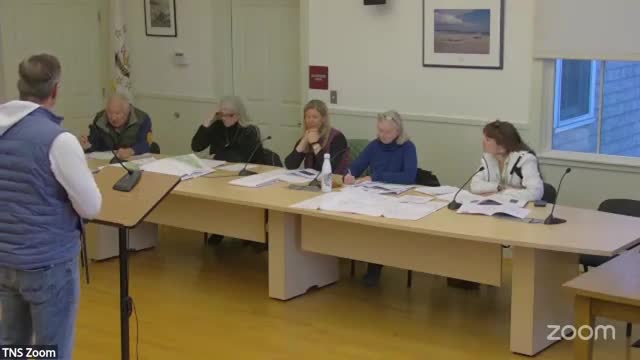
This article was created by AI using a video recording of the meeting. It summarizes the key points discussed, but for full details and context, please refer to the video of the full meeting. Link to Full Meeting
The plans revealed an ambitious layout featuring six bedrooms and two kitchens, with the possibility of accommodating up to 35 guests through the inclusion of bunk beds. This raised eyebrows among commission members, who expressed concerns about the increased demand for water that such a capacity would entail. One member noted that the existing Old Island Pub likely had a significantly lower water usage compared to what the new design could require, especially with the addition of five more bathrooms.
The conversation highlighted the importance of understanding the water allotment for the establishment, as the town grapples with limited water resources. Questions arose about whether the water company had been consulted regarding these changes and how they would affect the overall water consumption in the area. The commission emphasized the need for clarity on this issue to ensure that the expansion aligns with the town's conservation goals.
While the discussions were rooted in practical concerns, there was also an appreciation for the potential benefits of the renovation. Members acknowledged the positive aspects of the proposed changes, including the aesthetic improvements and the potential for increased employment opportunities. The meeting concluded with a call for further dialogue with the water company to address these critical issues before moving forward with the project.
As the community looks ahead, the fate of the Old Island Pub renovation remains intertwined with the broader conversation about sustainable water use in New Shoreham, reflecting the delicate balance between development and conservation in this picturesque Rhode Island town.
Converted from New Shoreham Conservation Commission 2025-02-05 meeting on February 05, 2025
Link to Full Meeting
Comments
View full meeting
This article is based on a recent meeting—watch the full video and explore the complete transcript for deeper insights into the discussion.
View full meeting